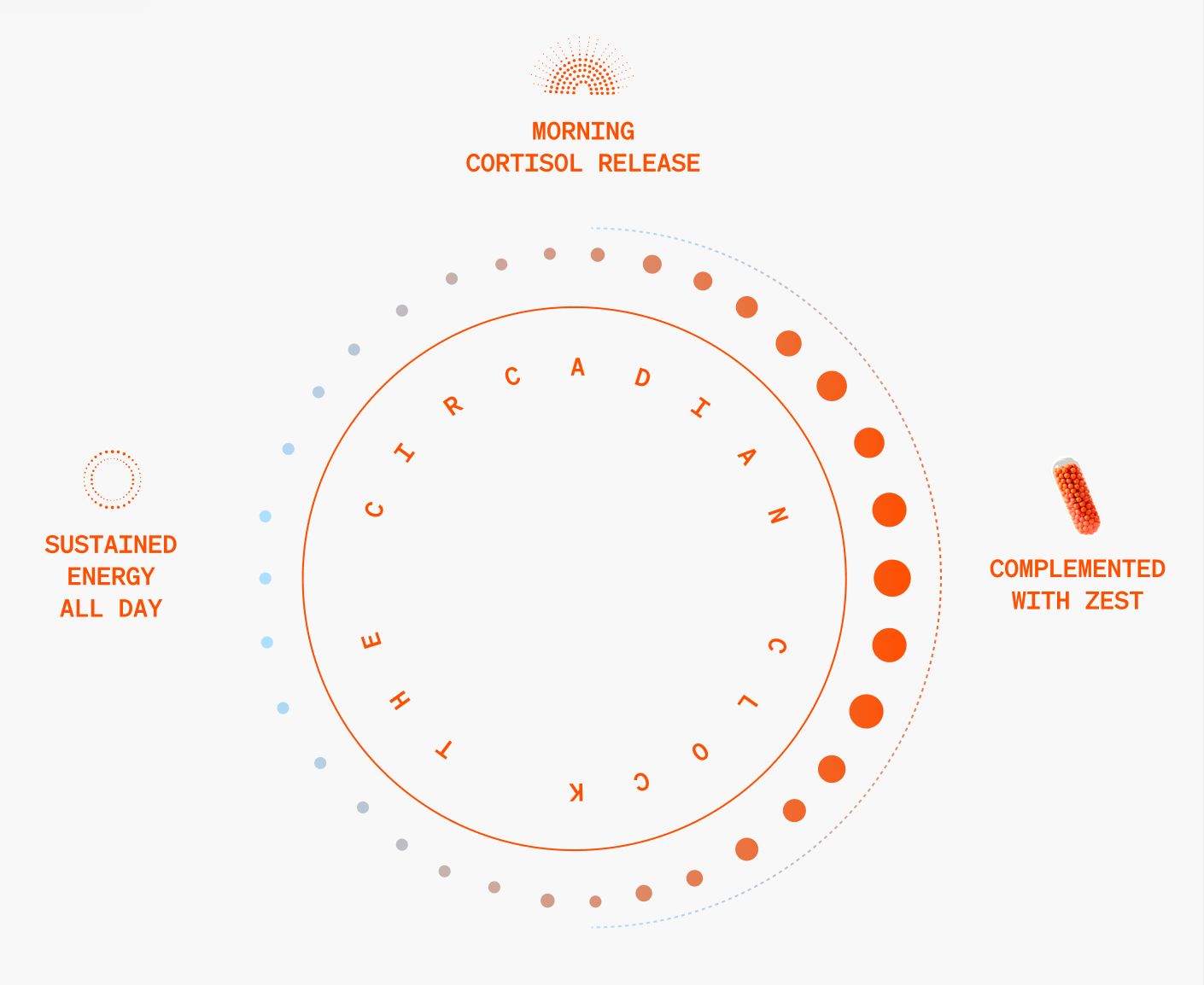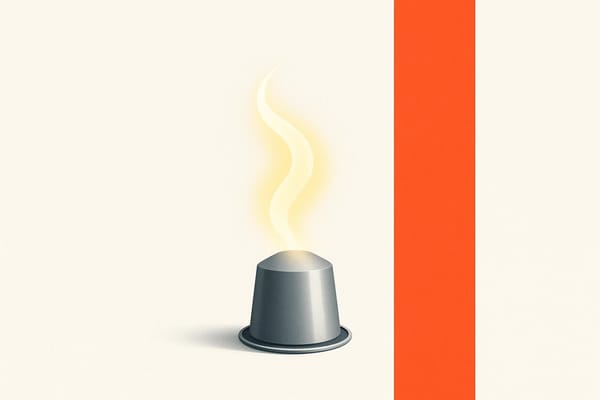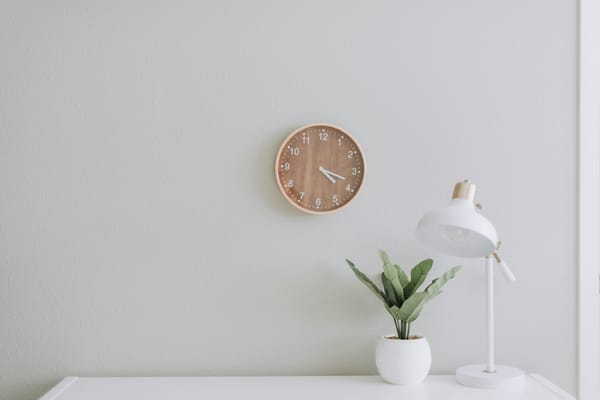Spring Forward: How Morning Sunlight, Movement, and Caffeine Reset Your Biological Clock
Enhance your energy and sleep with morning sunlight, exercise, and smart caffeine use to reset your internal biological clock.

As the days grow longer and clocks leap forward, many people find their sleep and energy patterns thrown off. But spring also brings a powerful opportunity to realign your internal clock. Three simple, science-backed habits - morning sunlight, movement, and well-timed caffeine - can help reset your circadian rhythm for better sleep, sharper focus, and steadier energy.
- Morning Sunlight: Step outside within an hour of waking. Just 5-30 minutes of natural light acts as a powerful cue to sync your body’s master clock with the day.
- Movement: Light to moderate morning exercise between 7-9 a.m. reinforces alertness and helps regulate your sleep-wake cycle.
- Smart Caffeine Use: Optimally timed caffeine can reset your circadian clock, and better align your energy boost with your natural rhythm, all while helping you with the other two habits and preventing the afternoon crash.
Think of it as spring cleaning for your biology. These habits are easy to integrate and grounded in decades of circadian science - helping you wake up refreshed and wind down with ease.

Morning Sunlight and Your Body Clock
Morning sunlight helps align your internal clock, improving both sleep and energy levels.
How Light Impacts Sleep Cycles
Exposure to morning light plays a key role in resetting your sleep-wake cycle. This process involves ipRGCs (intrinsically photosensitive retinal ganglion cells), which send signals to your brain’s circadian clock. Dr. Nayantara Santhi explains:
"Apart from vision, light serves a critical non-visual function by regulating our physiology and behavior in myriad ways. In humans, the synchronization of our internal biological clock to the environmental day/night cycle is mediated by the non-visual effects of light."
These signals reduce melatonin (the sleep hormone) and increase cortisol, helping you feel more awake and alert.
How to Get Enough Morning Light
Stanford neuroscientist Andrew Huberman highlights:
"I consider viewing morning sunlight in the top five of all actions that support mental health, physical health and performance."
Here’s a simple guide to ensure you’re getting the right amount of morning light:
| Weather Condition | Exposure Time Needed | Best Time to Go Outside |
|---|---|---|
| Sunny Day | 5–10 minutes | Within 30–60 minutes of waking |
| Cloudy Day | 15–20 minutes | Within 30–60 minutes of waking |
| Overcast Day | 30+ minutes | Within 30–60 minutes of waking |
If you’re up before sunrise or live in a darker area, use bright indoor lighting and head outdoors as soon as daylight appears. Your body is most sensitive to light within the first hour of waking. Following these steps regularly can lead to noticeable improvements in sleep and mood.
Benefits of Morning Light
Consistent exposure to morning light can improve sleep quality, help you fall asleep faster, boost daytime alertness, and lift your mood by increasing serotonin levels. Research shows that even short bursts of morning light can benefit people struggling with sleep disorders, helping them achieve better rest at night.
Morning Exercise and Energy Levels
Getting active in the morning helps regulate your internal clock and boosts energy for the rest of the day. Combined with exposure to morning light, exercise strengthens your body's natural wake-up signals.
Exercise and Sleep Timing
Morning workouts can help adjust your internal clock. Research suggests that exercising consistently in the morning can shift your sleep schedule, making it easier to fall asleep at night and wake up feeling rested. The best time to exercise is typically between 7 a.m. and 9 a.m., when your body's cortisol levels naturally peak. This adjustment works hand-in-hand with the benefits of morning sunlight.
Simple Morning Exercise Guide
To make the most of your morning routine, try this exercise plan based on your energy level:
| Energy Level | Activity | Duration | Effect |
|---|---|---|---|
| Low Energy | Gentle stretching, arm rotations, back stretches | 10–15 minutes | Improves blood flow |
| Medium Energy | Modified sit-ups, squats, elbow-to-knee movements | 15–20 minutes | Warms up your body |
| High Energy | Light cardio and full-body movements | 20–30 minutes | Boosts circulation |
Studies show that regular aerobic exercise, like a 30-minute morning jog, over three weeks can improve sleep, mood, and focus.
If you're just starting with morning workouts, ease into it. Even a few light movements can help align your body's rhythm. Focus on exercises that:
- Engage large muscle groups
- Include gentle stretches
- Use full-body movements
- Keep intensity moderate
The right combination of timing and effort helps your body stay alert and in sync with its natural rhythm all day long.
Delayed-Release Caffeine for Better Mornings
How Timed Caffeine Release Works
Timing your caffeine intake can make a big difference in your morning energy levels.
Zest Labs has designed a delayed-release formula to deliver caffeine and other nutrients 7–8 hours after you take it. This ensures you wake up feeling refreshed and alert, without the typical grogginess.
This combination works in sync with your body’s natural rhythm, helping you maintain steady energy throughout the day. As Dr. Sohaib Imtiaz, Lifestyle Physician and Zest's Medical Advisor, puts it:
Caffeine works best when consumed early, as it can better bind to adenosine-receptors post-sleep and is also more effective in immediately reducing sleep inertia symptoms when you wake up. This is why the “coffee nap” works - the caffeine is able to better bind to adenosine receptors because the nap clears out the adenosine.
Additionally, studies have shown that caffeine influences the inner clock (the so-called circadian clock). It is known that when caffeine is consumed in the evening, the inner clock shifts back, e.g. you get tired later than your body would otherwise naturally. This property can also be used to reset the internal clock, when taken earlier in the morning, to cause a phase advance and shift the inner clock forward, i.e. to turn an evening person into a morning person. This is supported by the fact that caffeine leads to a cortisol release, which is known for its waking properties.

Different Timing of Your Caffeine Dose
Zest uses a patented timed-release system designed to match your body's natural cortisol rhythm. Unlike regular coffee, which delivers a quick caffeine surge within 45 minutes, Zest's system gradually releases caffeine over 3-4 hours. This is achieved through pH-sensitive coatings that activate in the small intestine.
Here's the science: Zest maintains a more stable caffeine concentration around 1.5–2.0 mg/L, compared to the sharp spike of ~1.9–2.2 mg/L seen with regular coffee. By releasing caffeine gradually, Zest helps smooth out the energy curve and reduces the likelihood of an afternoon crash.
| Characteristic | Zest | Regular Coffee |
|---|---|---|
| Peak Time | 9-10 hours after ingestion | 45-90 minutes after ingestion |
| Peak Concentration | 1.5-2.0 mg/L sustained | 1.9 - 2.2 mg/L spike |
| Duration of Effect | 4-6 hours | 1-2 hours |
| Gastric Impact | Less acid reflux | Standard impact |
Using All 3 Methods Together
Combining these strategies can create a stronger, more noticeable effect than using them individually.
Combined Effects
Studies suggest that combining morning sunlight, exercise, and well-timed caffeine can significantly improve your body's internal clock. For instance, one study found that bright light exposure followed by exercise caused a circadian phase shift of about 80.8 minutes, compared to just 47.3 minutes when only exercise was used. This combination boosts the effectiveness of each method.
Morning sunlight helps suppress melatonin, exercise regulates your rhythm, and delayed-release caffeine (like the kind developed by Zest) enhances wakefulness. Together, they work to reset your biological clock.
Step-by-Step Morning Plan
Here’s a simple morning routine that incorporates all three methods for the best results:
| Time | Activity | Duration | Benefits |
|---|---|---|---|
| Before bed | Take Zest Labs' delayed-release capsule 7-8 hours before desired wake-up. | ~1 minute | Caffeine activates 7–8 hours later for a smooth wake-up |
| 6:00 AM | Wake up naturally | - | Aligns with your body’s natural cortisol rise |
| 6:15–6:45 AM | Spend time outside in natural light | 30 minutes | Reduces melatonin and adjusts your internal clock |
| 7:00–7:30 AM | Engage in light exercise | 30 minutes | Boosts energy and helps your metabolism kick into gear |
| 8:00–9:00 AM | Focus on key tasks | 60 minutes | Maximizes productivity during your most alert period |
Research also links higher activity levels with better alertness the following day. Following this routine consistently can lead to better energy and focus throughout your day.
Make this plan a daily habit to start each morning feeling refreshed and energized.
Conclusion
Take control of your biological clock with three simple tools: morning sunlight, movement, and delayed-release caffeine.
As Dr. Azure Grant, neuroscientist and PhD with expertise in circadian rhythms, puts it:
"Routines create powerful anchors for the recurring internal mechanisms within our bodies. If you're having a hard time sleeping, or just want to dig into living as healthfully as possible, you can control your internal clock with wise use of these cues."
These methods complement each other perfectly. Morning light sets your internal rhythm, exercise strengthens it, and well-timed caffeine enhances alertness. Using Zest Labs' delayed-release caffeine technology ensures steady energy exactly when you need it most.
Your biological clock influences key functions like blood pressure, muscle strength, and metabolism. By sticking to these science-backed strategies, you can improve your mornings and enhance your daily performance.
Make them part of your routine to feel more energized and productive every day.






